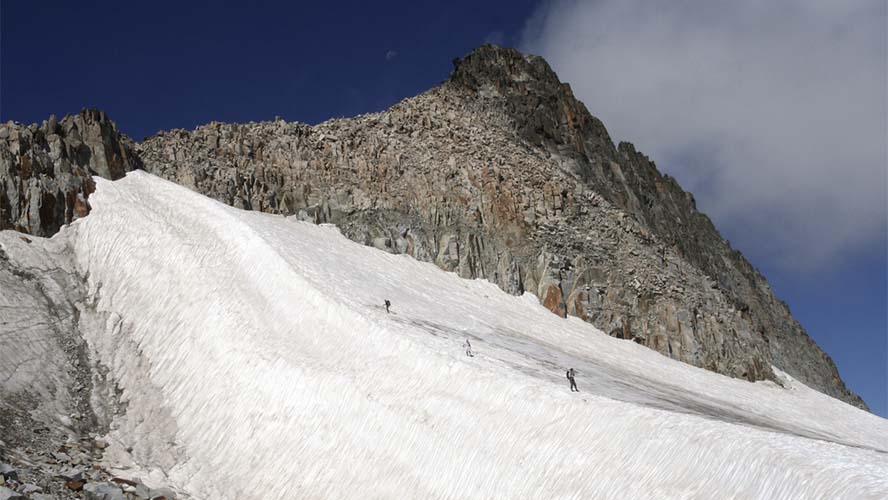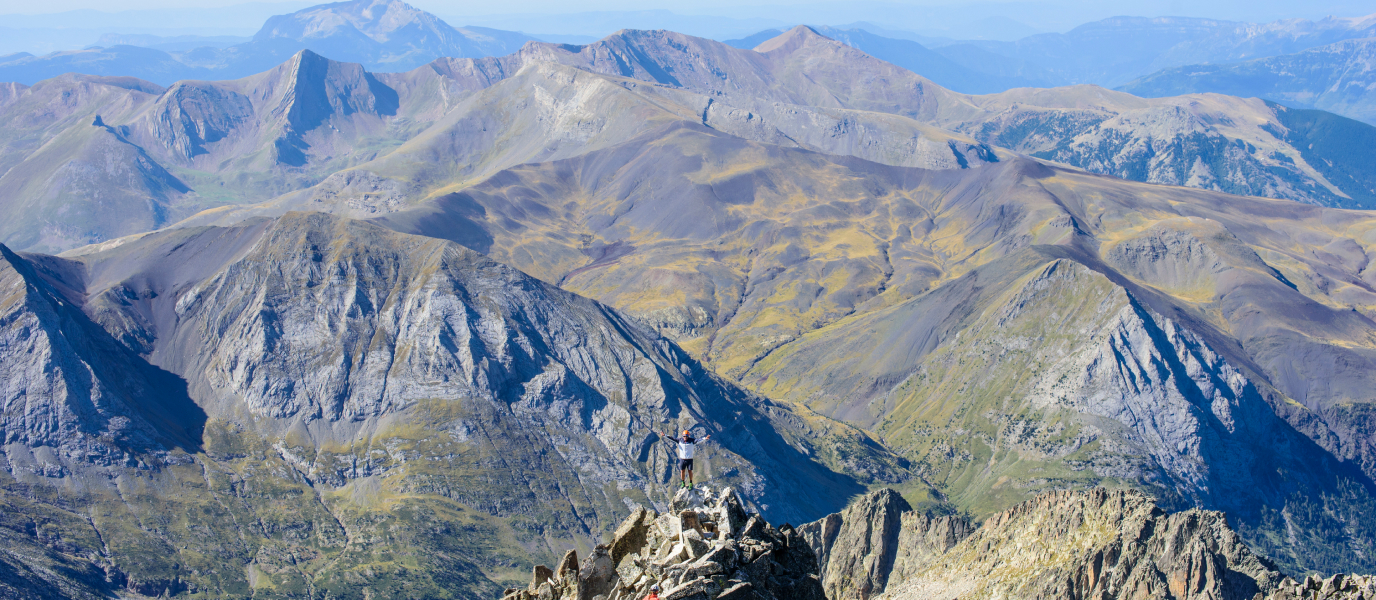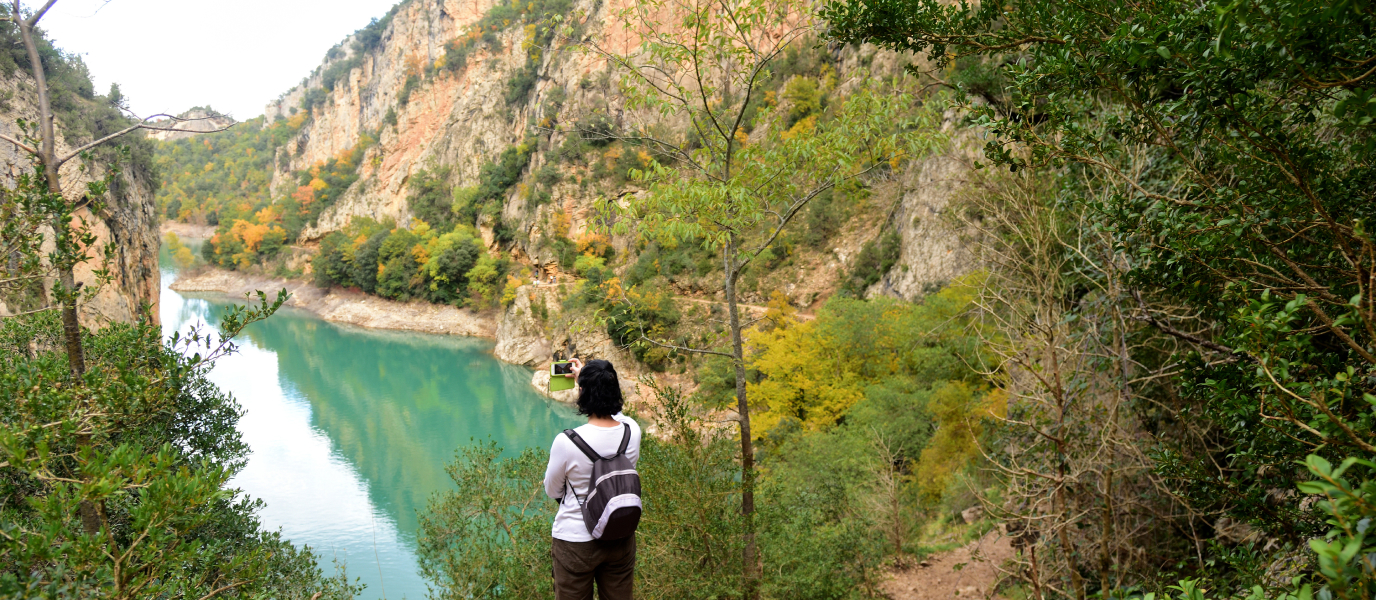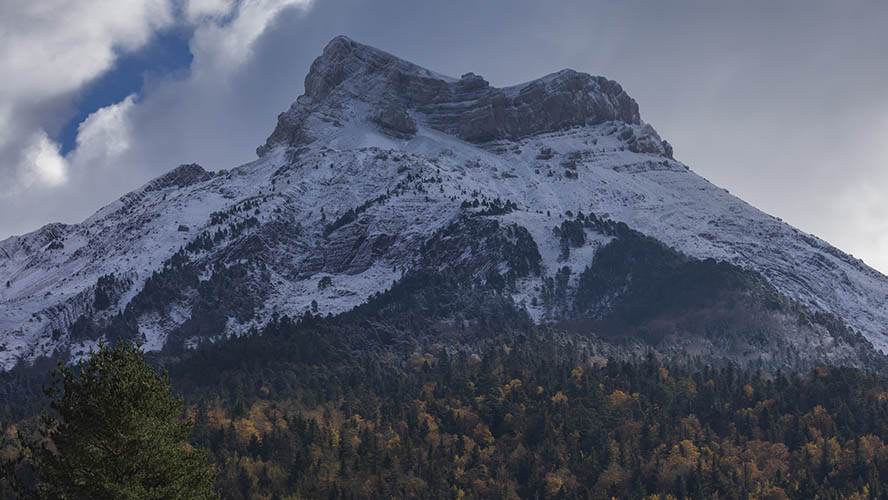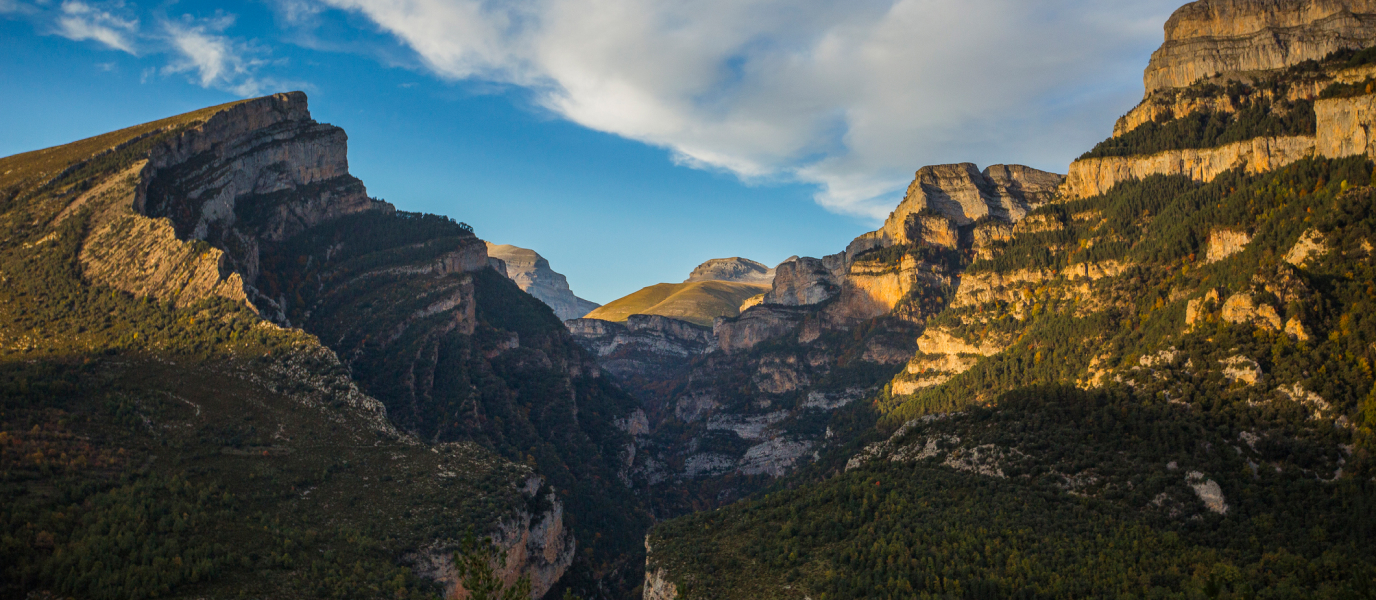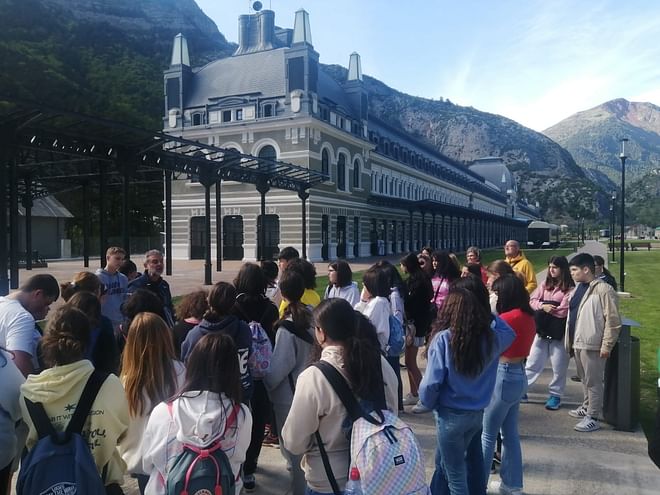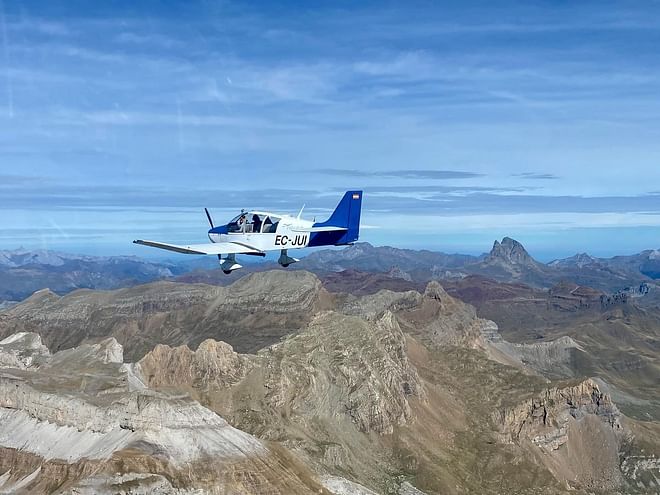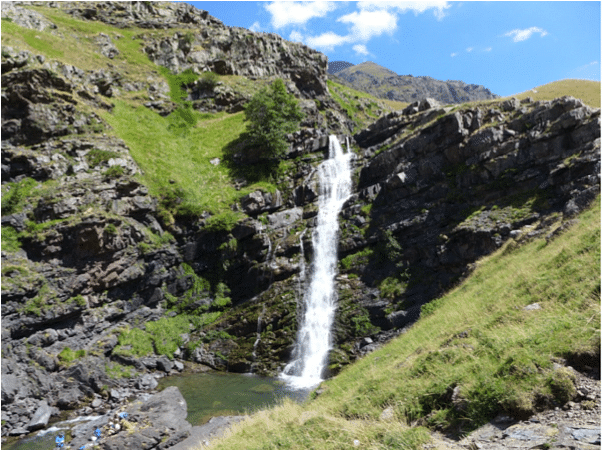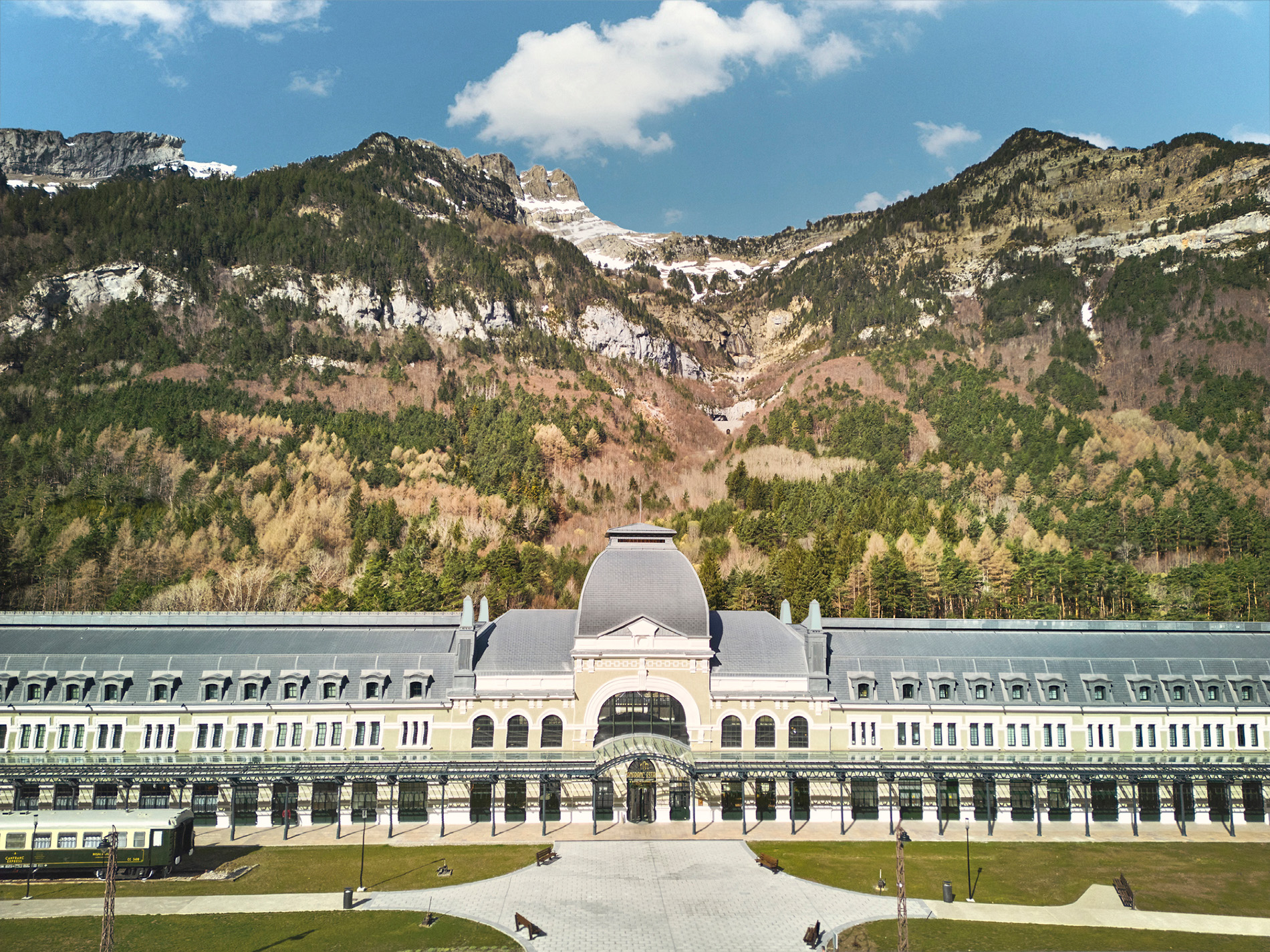The Posets-Maladeta Natural Park is an embodiment of the majesty of the Pyrenees. Located in the easternmost part of the Aragonese Pyrenees, this park holds enormous ecological value and marks a spot where the Pyrenees’ highest peaks converge with imposing valleys, stunning waterfalls and immemorial glacial lakes that could easily serve as the setting of epic fantasy novels.
Things to see and do in the Posets-Maladeta Natural Park
Peaks such as the mythical Aneto, Pico Posets, Pico Maldito and the Natural Monument of the Pyrenean Glaciers (with its succession of ibones, or small mountain lakes, each more surprising than the last) are some of the many attractions that await visitors. Please note that hikers should be in good physical condition, with the park’s altitude ranging from 1,500 metres above sea level at the bottom of the valley to 3,404 metres at the top of the Aneto peak. The park combines the most beautiful scenery and toughest topography of the Alto Pirineo area. Let’s take a look at the most incredible spots in the Posets-Maladeta Natural Park that you simply have to visit.
Aiguallut
Let’s kick off our visit of the Posets-Maladeta Natural Park with an easy hike that can be enjoyed by the whole family. Due to the monumental nature of the area and the ease with which it can be explored, the Aiguallut plain is one of the most visited parts of the natural park. It is located close to the town of Benasque. The most popular route begins at the La Bersuta refuge. It follows the course of the Aiguallut waters which descend from Aneto and then disappear in a chasm, before later re-appearing in the Arán Valley.
Along the whole trail, the difference in elevation is a mere 130 metres. This circular route which leads to the great Aiguallut meadow can be completed in one and a half hours. Along this trail you’ll be able to admire the stunning Aiguallut waterfall, before its waters disappear into a chasm, and marvel at the great Aiguallut meadow: a pleasant, unspoiled opening notable for its graceful meandering waters and lush green fields, which are presided over by the spectacular Aneto peak.
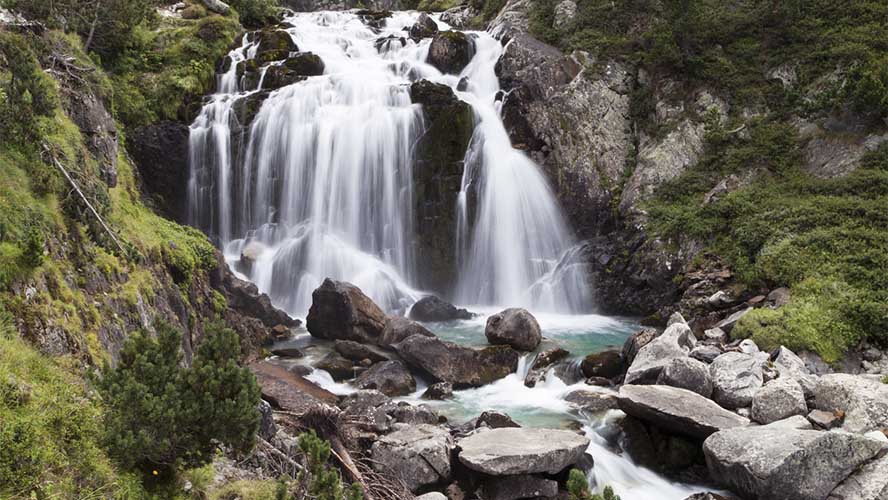
Ibones in Posets-Maladeta
In the Alto Aragón, lakes in the upper mountain area are known as ibones. In the Pyrenees, there are marvellous ibones with clear, transparent waters hidden among the peaks. The most famous ones are arguably those found in the Posets-Maladeta Natural Park. Let’s take a look at some of the best known ones.
Barbarisa ibones
The Barbarisa ibones are located at the southernmost tip of the Posets massif. Its most accessible trail begins at the Sahún pass, which is found at an altitude of 2,002 metres above sea level. The route is well signposted and can be easily navigated by families with some experience in mountain hiking. Along the way you will pass by the striking Prats waterfall and the Chico ibón, before ascending to the larger Grande ibón with the beautiful Barbarisa cirque in the background.
Villamuerta ibones
The Villamuerta ibones are found very close to Aiguallut, and have become an alternative hiking route for those wanting to avoid the crowds in the hot summer months. The hike begins in the La Besurta recreational area, which can only be accessed along a track which leads from the Los Llanos del Hospital car park. During high season, there are buses which run every half an hour. The same bus can also be taken from the town of Benasque. This accessible trail is the perfect introduction to outdoor hiking for your little ones. The circular route, which can be completed in less than an hour and a half, has a difference in elevation of a mere 170 metres. You’ll reach the lower ibón after just 10 minutes of hiking and will catch sight of the higher one 40 minutes into your walk. The incredible views of the ibones —with the Aneto peak, the Maladeta massif and the Perdiguero massif in the background— will take your breath away.
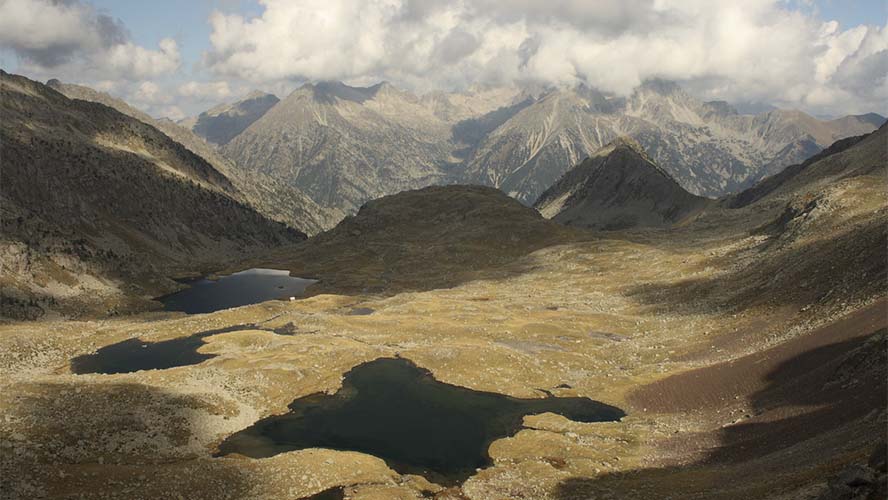
Gorgutes ibones and solana
This route is slightly more challenging than the previous one. It begins at the end of the A-139 road, past Los Llanos del Hospital. This 6-kilometre trail, which has a difference in elevation of more than 500 metres, can be completed in under three hours. It is well signposted, well maintained and easy to follow. It passes by the pleasant Gorgutes ravine and the solana (sunny-side slope of a mountain) of the same name, as well as a pretty lake that offers a gorgeous panoramic view of the Maladeta massif. The trail continues uphill to the Gorgutes ibón: a large and secluded lake from where you can catch a glimpse of the La Glera pass, which separates the Spanish Pyrenees from the French side.
Escarpinosa ibón
This ibón is another attraction of the Benasque Valley. It has everything that you could possibly ask for: a trail through verdant beech and pine forests with green valleys, refreshing lakes and breathtaking peaks in the background. However, we must stress that this is a fairly challenging trail, where hikers will need to overcome a difference of elevation of 700 metres over the course of the 13-kilometre walk. It begins in the Estós valley, located 4.5 kilometres outside of Benasque. During the first part of the ascent you will reach the beautiful Batisielles plains, where you can make out the secluded Batisielle ibón amidst a blanket of green. After leaving this small lake behind, the trail ascends to the Escapinosa ibón via a path flanked by pine trees and rocks. A wonderful panorama awaits you at the top, where you will be treated to a view of the ibón surrounded by pine trees and majestic mountains with the unmistakeable sound of crashing waterfalls in the distance.
Ardonés waterfall
The Ardonés waterfall, also known as the Bom waterfall, is located near the Cerler ski resort and is one of the town’s main tourist attractions. You can start the hike in the village itself by following the yellow PR (pequeño recorrido, or ‘small route’) markings. You will reach the monumental and noisy Ardonés waterfall in no more than an hour and a half.
Eriste valley
The rugged Eriste valley has been shaped by the waters that rush from Pico Posets down to the Eresa river. The trail is relatively simple albeit somewhat demanding: this 7 kilometre trail takes three hours to complete and entails a 500 metre difference of elevation. From the village of Eriste, drive along a track until you get to the Espantigosa waterfall. Once you’re there, start walking along the PR-36 route. The first part of the ascent is pleasant, punctuated with pine forests, rivers and open areas that are great places to stop-off and recharge your batteries. The second part kicks off with a steep ascent to the Ángel Orús refuge, where you can enjoy an incredible panoramic view of the valley before heading back down.
Estós valley
The green Estós valley is scattered with forests and presided over by enormous mountains. To explore this valley is to enjoy the grandeur of the Aragonese Pyrenean landscape. From the car park at the beginning of the valley, take the trail to the Batisielles ibón and then continue upwards until you reach the Escarpinosa ibón.
Vallibierna valley
The Vallibierna valley is located between the Cerler ski resort and the La Maladeta massif. Black pine trees and meadows alternate on its slopes. The GR-11 trail penetrates this 9-kilometre valley. By following the trail, you’ll walk past a mountain refuge before continuing to the Vallibierna ibón. Then, after walking a bit more, you’ll reach another one slightly higher up.
Aneto
The king of the Pyrenees has a name: Aneto. It marks the highest peak of this mountain system, standing at 3,404 metres above sea level. This mountain is also home to the largest glacier in the Pyrenees which, sadly, is shrinking every year. To reach the summit, you’ll need to take the footpath from the Llanos del Hospital car park. This is a highly demanding route: not so much for its technical difficulty, but for its length. It is 21 kilometres long and takes more than 12 hours to complete, so all hikers who attempt it should have a good physical condition. However, once you reach the top of the mountain and feel like you have conquered the Pyrenees, the effort will be worth it.
